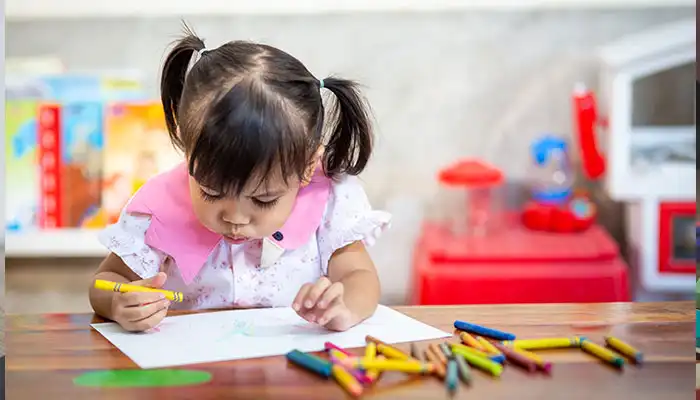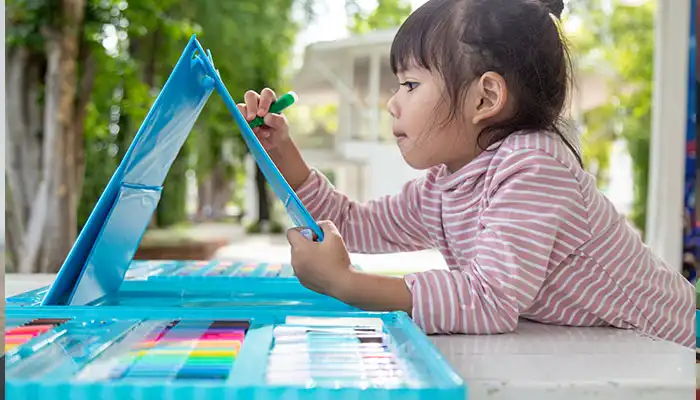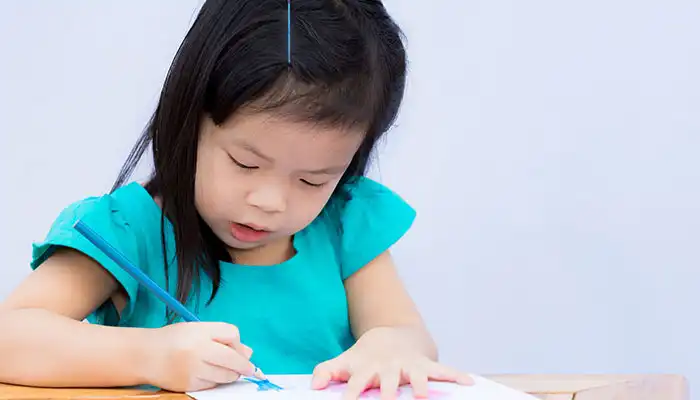Why Free Printable Name Tracing Sheets for Preschoolers Are Essential
Free Printable Name Tracing Sheets for preschool are more than just a tool for writing. They help a child to grow their readiness for reading, develop hand dexterity, and increase their fondness for the written word. As a parent or teacher you likely know how important it is to ensure children feel good about themselves and their capabilities in their early learning endeavors. Name tracing sheets provide a basic, seamless, and easy method of accomplishing just that.
The Importance of Free Printable Name Tracing Sheets for Preschoolers
Take tracing your name in preschool – why? It’s not that your toddler needs to master letters or penmanship. It’s about giving your child a sense of self, confidence and independence.
- Identity and Recognition: The first word your child learns to recognise, almost invariably, is his or her own name. This is deeply personal and meaningful to your little one, linking that word with them. Few better ways to link the written with the ‘me’ than for your child to be able to trace her name.
- Confidence building: seeing your name in stone is amazing for a kid’s self-confidence, belief that they can learn, enthusing them to spell out more.Of course, the point of tracing one’s own name is to learn how it’s actually written.
After all, name writing isn’t really about names – it’s about holding a pencil and making marks, it’s about using one finger at a time and learning to form the symbols on which our written language relies. It’s a rite of passage in the first of two fundamentally different experiences that define human communicative culture: reading and writing.

Types of Free Printable Name Tracing Sheets for Preschool
There are several types of Free Printable Name Tracing Sheets and it’s important to know all of your options. We try to not just ritualize the practice, but actually offer and switch up forms and formats so that learning is fresh and learning is fun.
-
Customisable Free Printable Name Tracing Sheets
These things are awesome. What if you were able to type your child’s name into a line on a worksheet, press print, and then they could trace it? Customised sheets are great for this purpose because they are made for your child.
- Why They Work: Personalised worksheets are a big hit. There’s a sense of significance if the one says: ‘Charlie’s example’ or ‘Gina’s exercise’. It’s not just any example or exercise. It’s this very important person’s example.
- How to Do It: Sites such as Twinkl or Education.com have name-tracing tools available where you can type in a name, choose the style, and print.
Story Time: I had a client (parent) who has a six-year-old son who hadn’t shown much interest in writing. When she started using the personalised name tracing page with his name on it, he lit up. He kept repeating: ‘Oh wow. That’s my name? Can I do it again? My name!
-
Alphabet Tracing Combined with Free Printable Name Tracing Sheets
While the worksheet reinforces letter recognition by asking kids to trace the letters that spell out their name, it also provides extra letter-tracing reinforcement.
- Why They Work: It’s a two-for-one: kids get both their alphabet and name practice in the process of learning to write.
- How to Use Them: Begin with the big letters and move to the smallest ones, improving your child’s strength and control as he or she continues to refine motor skills.
- Nonsense Syllables: A teacher who shared this example with me says that her kindergarten class learned to read by writing their names and traced the motos in the image, which caused no end of confusion (‘But I don’t know how to write this letter!’) • Story Time: A teacher I know tried this method with her class. She found that those who both traced the letters and their names tended to pick up reading skills faster, because with each read-aloud, they were cementing associations between the letters and the words.
-
Themed Free Printable Name Tracing Sheets
Kids love themes — dinosaurs, maybe, or princesses, or outer space. Themed tracing sheets add an extra dimension of fun to learning.
- Personalisation: You can add fun Rancher-themed workhteets so that your child learns through a highly personalised lesson. If your child is excited about the topic, they are more likely to join in on the learning experience.
- How to Use Them: Choose a theme your child likes: princesses, Mickey Mouse, dinosaurs, animals. Find a themed tracing sheet, or make your own: say, if your child adores animals, find a tracing sheet with your child’s name surrounded by animals.
- The storytime parent: My daughter loves unicorns. She wanted to do her name-tracing sheet all the time because that meant that she could look at the unicorns on the page.
Where to Find Free Printable Name Tracing Sheets
You don’t need to look far to find Free Printable Name Tracing Sheets in preschool. There are plenty of them. Here’s where to find them.
-
Educational Websites
Educational websites provide vast resources. Try to visit Twinkl, Education.com, Teachers Pay Teachers – there you can choose from hundreds of Free Printable Name Tracing Sheets.
- Twinkl: https://www.twinkl.co.uk/This is a popular site for school teachers. They offer free and paid resources including name tracing sheets that can be personalised to learners’ names. The resources are easy to use and the designs are engaging for children.
- Education.com: While the name of this site speaks for itself, it offers a wealth of printable worksheets as well. Its name-tracing collection includes customisable sheets and pre-made sheets for different skill levels.
- Teachers Pay Teachers: Although some items here have an entry cost, many educators offer Free Printable Name Tracing Sheets. They are often of high quality, created by seasoned teachers who know what works in the classroom.
-
Online Customisation Tools
There are a number of sites that will let you make up your own, free of charge, which are great if you find something that’s a really good fit for your child.
- Why use them? Customisation gives these worksheets an additional personal feel. You can control the length of the worksheets, change the difficulty settings, change the font style and size.
- Tools: There are a few popular word and name tracing generators, such as WorksheetWorks.com or TracingGenerator.com (where you can type in any name for a printable word game tracing sheet).
- Homeschool Mum: ‘The Custom Name Tracing Generator helped so much, especially because my son was having a difficult time learning to write. When he saw his name traced in block letters, cursive, and other styles, it immediately sparked his enthusiasm for writing.’
-
Preschool Resources
Don’t forget the printable worksheets that usually comes from your kid’s preschool to reinforce what she learns at school. Most preschools offer parents such worksheets.
- Useful: They often support the topics your kid is taught at school and are a great way to reinforce skills at home.
- How to Get: Ask your child’s teacher if the classroom has any name-tracing sheets; she might also know of websites or devices that correspond with the classroom curriculum.
- Story Time: ‘Every week, each kid brings one of those rubberised forecast sheets home with them,’ said one teacher. ‘You can print their name on there however you want! Sometimes we’ll create five different versions of the child’s name using the most popular schools colours and they can pick the one they like best. Parents love staying involved in their kid’s development, and it gives them an easy way to link up what they’re doing at home with what we’re doing at school.
-
Homeschooling Communities
Online homeschooling groups and forums are great sources for free printable resources shared by parents and educators.
- Why do it? : Homeschooling communities are friendly places, and often your fellow homeschoolers will be keen to share their finds with you. You’ll soon be inundated with name-tracing sheets that ‘everyone uses’ and are available for free on the internet.
- Find a Peer Support Group: Groups on Facebook or on the online discussion group The Well-Trained Mind are full of parents who home-school, and they can give you the best suggestions for what will work for your child.
- Story Time: Home-school dad found number tracing worksheets he liked online: ‘Someone posted in an online forum, another parent used them,’ he said. ‘They were great – and I couldn’t beat the price – not a dime!’
Tips for Free Printable Name Tracing Sheets Effectively
Free printable name tracing sheets for preschool are not the thing where you simply give your child a piece of paper and hope for the best. Here is how to help your little one make the most of these tools.
-
Start with Large Letters
When your little one is a nascent writer and usually leaves her arms rocking before they can even finish a single vertical stroke, try making your own large-lettered worksheets to introduce her to the basic motions of writing before she worries (and you worry along with her) about her inability to control a pointy, stiff piece of wood in tight confined spaces.
large letter patterns are easier to trace With small hands it makes sense to limit the length of letters, and relegate the learning of cursive for later. Until then, letters need to be big and even, so little hands can develop the patterns and muscle memory without concentrating on the details. Why It Helps: large letter patterns are easier to trace. Letters should not be discretely abandoned (c was written with different strokes from b, for example), but it takes significant time at the table to nail the details.
- How to do it: Look for worksheets with large, bold fonts or create your own online with one of the customisation tools were provide – and then gradually reduce the font size as your child becomes more confident.
- Story Time: One mother found that starting with large letters helped her son. ‘He was struggling with the small ones, but when I switched to large-letter magnets, he fell right into place and started having fun with it.’
-
Incorporate Tracing into Daily Routine
But you don’t have to make it special by doing some sort of ‘name tracing’ activity every day. You can easily use the art of name tracing as a part of your child’s everyday life, and that will actually make it more enjoyable – less like work, and more fun!
- Routine Is Important: mastering any skill requires steady, daily practice. Tracing needs to become such an integral part of daily life that your child gains proficiency by doing so naturally, without even registering that they’re learning to trace!
- Always copy your name: Have your child trace the letters of her name on drawings or art projects, or on a homemade card. Try to make this part of play, rather than a separate activity.
- Show Me the Toy: A fellow parent told us how she integrated name tracing into her daughter’s make-believe playtime: ‘We’d draw pictures, and I’d ask her to trace her name at the bottom. She probably didn’t even realise she was practising writing!
-
Combine Tracing with Other Activities
Yes, an approach that involves encouraging pupils to cover an outline of their name with a crayon or pen, either eight times or multiple times, or tracing their name while saying it out loud, is helpful for name-learning and recognising, and it involves a fine motor skill. But it should not be done in isolation, for it is but one key to the lock.
- Why It Works: Activities like cutting, colouring, and playing with Playdough is no less effective, and it goes on to develop the muscles required for writing. When combined with tracing, such activities build upon each other.
- How to put them together: name tracing can be complemented with activities such as cutting out letters, colouring their name in or using playdough.
- Story Time: One teacher described how she used tracing in combination with playdough: ‘We trace the letter first, and then they roll out some playdough to make the same letters. They love it, and it really helps get those new letters into their recognition both with a visual image as well as the muscle memory side of it.

Celebrate Progress
It’s easy to take a big picture view of this situation with your child, not giving him or her enough credit for their baby steps. Every capital letter your child effortlessly reached for, every lowercase letter properly set, or every word connected marks a step forward. Every little learning accomplishment is worth a celebration because it keeps them motivated and interested in learning.
- Celebrating Goals: Celebrating goals tell kids in no uncertain terms – ‘Hey this is hard, but only for this long, and then we get to celebrate’. And isn’t learning and getting better supposed to be fun? in the new edition of the Positively Positive Parenting Workbook — out on May 9, 2017. •
- How to Celebrate: Make a rights pledge chart, give out stickers, or just offer lots of praise, letting your child know you’re proud of how hard they’ve been working for their rights.
- Story Time: This dad described how he rewarded his daughter’s progress: ‘I had a chart where we put a sticker every time she did a Traces-Outside-the-Lines name-tracing sheet. When the chart was filled up, we got to have a special night, a movie and her favourite dessert or something like that. It kept her motivated and excited about learning.’
Final Thoughts
Trace your child’s name for free in preschool name tracing sheets? That’s not, well, child’s play! Here’s why these sheets, when used well, can boost a child’s confidence, encourage fine motor skills and set the stage for a healthy lifetime of reading and writing. Use these free preschool printables too. Creating a fun routine for your child is one of the best ways to help your preschooler learn to write their name, and then read it.
Making the Most of Free Printable Name Tracing Sheets for Preschool
Free printable name tracing sheets for preschool are one of the most useful ways to help young children build early literacy and fine motor skills, but it’s worth taking a little more time to consider what else you can do to make it even better. Below, we’ll look into what will make these simple tools really effective, and how you can use them to help your preschooler take even more from the whole exciting process.
How to Keep Preschoolers Engaged with Name Tracing
One of the biggest challenges that parents and teachers face is how to keep young children focused. With free printable name tracing pages for preschool, that challenge largely depends on mixing up the different activities and tying them into everyday activities.
-
Switch Up the Writing Tools
- It Works Because: Switching from pencil to crayon to marker (and maybe on to fingerpaints) will also help to ensure that this isn’t dull practice, but continues to be stimulating and pleasurable. And it’s a nice opportunity to build a variety of fine motor skills.
How to Do It: Start with crayons, move to markers for a smoother stroke, use finger paints for a wild ride – just be ready to mop.
- Assignable: one mum I know couldn’t bring her daughter to stay focused on tracing. When she bought colourful gel pens and glitter markers, her daughter was suddenly eager to trace her name every day. Just making an activity look a bit different made it seem novel.
-
Incorporate Name Tracing into Art Projects
- For The Same Reason That It’s Effective: By uniting name-tracing practice with art projects, kids tend to see their name as part of something bigger. That makes the practice more meaningful and fun.
- Make a practice of asking your child to affix his or her name to each and every piece of art: A child who sees his own name attached to each page of his work is given an extra measure of pride and ownership in his products. A child who appreciates his work has one more reason to keep working.
- Example: A primary-school teacher I know had her students trace their names on the front of greeting cards that they made for their families and friends. They proudly showed their cards to their parents and friends, and their writing practice started to grow organically.
-
Use Name Tracing in Play-Based Learning
- why it works: Play-based learning is what kids naturally do to learn – and you’re teaching them their names in the process, without it feeling like a teaching session.
- Make it happen: Set up a ‘name scavenger hunt’ where your child has to ‘trace’ their name at every stop, or use the lines as part of a role-play session – say, writing a prescription as a doctor.
- Car guy dad: I put a ‘racing pit stop’ together for my car crazy boy. He needed to trace his full name before moving on to the next lap. I am pretty sure he’s loving tracing right now.
Overcoming Common Challenges with Name Tracing
Despite having all of the best supports in place, hurdles will undoubtedly appear. Here’s a detailed guide on how to find ways around some of the most common issues that can come up when using free printable name tracing sheets for kindergarten.
-
Dealing with Frustration and Resistance
- Why it Happens Because children of this age have not refined their skills of repetitive movement to trace – it can feel frustrating for them, and if it gets repetitive they may shut down. You can often see this type of shutdown when a child becomes resistive.
- How to overtcome it: Keep things light and upbeat – give lots of encouragement and break it down into small steps. If your child gets frustrated, stop and come back to it another time.
Example: Mom was feeling frustrated because her daughter would burst into tears anytime she ‘botched’ a line when tracing. We introduced a ‘no-pressure’ rule wherein mistakes are okay (even better!), an organic part of the learning process. That rule had a reassuring effect for her daughter: even though she would still gasp at the first ‘mistake’, overall she was much less stressed about tracing.
-
Making Tracing Part of a Routine Without It Becoming a Chore
- Why: Routine is necessary to acquire any skill. • Why Not: Tracing will become a chore if you do it too often.
- Spice it Up: Vary the time of day and location. One morning, trace names at the kitchen table after breakfast, the next, take your cards and some chalk to the patio. A little variability in sequence and scene keeps tracing both pleasurable and unexpected.
- Example: A teacher gave the parent the idea to include tracing in their son’s morning routine. But each day, the copy could be done on a different surface or from a different location. That way, the activity stopped being a mindless ‘routine’ and became something interesting.
FAQs About Free Printable Name Tracing Sheets for Preschool
And here are answers to common questions on how and why to use free printable name tracing pages for kindergarten.
How Often Should My Child Practice Name Tracing?
- Daily Practice: Preferably daily. The key is not to wear out your child; 10 minutes a day may be enough.
- I loved the example from one parent about bringing name tracing into the child’s nightly bedtime ritual: Just five minutes of tracing names before reading a story made bedtime so calming and something we both looked forward to.
What If My Child Struggles with Tracing?
tmp dirkthomas ‘Dyslexic youth are also more likely to struggle with mathematics.’ • Make It Easier: Start with large letters, or add dots that you can trace along with them. If they’re still finding it hard, it might be best to stop and try again later.
- If a student is struggling, say with tracing, you’ve tried everything but the letters are still too small and smudged. So you make the letters bigger and in dotted outline, and you provide a ‘tracing buddy’; that child gets vastly better.
Can Name Tracing Help with Learning Other Letters?
Yes: Exactly–name tracing is the training ground for learning other letters and reading in general. Once they learn the letters in their name, learning other letters will be easy.’
- (Example): One parent explained that it was her son’s increasing ability to trace names that helped him to master other letters more quickly. ‘Once he learned to write his name, he wanted to find more things to write and trace,’ she said, ‘things like mum and dad. After that it was like dominoes.’
Making Name Tracing a Family Affair
Name tracing doesn’t have to be a solo pursuit – it can be made more enjoyable by getting the whole family involved.
- Family Tracing Time
- It’s Fun As A Family Affair: We don’t usually think of tracing as a social activity, but when an arm load of family members are doing it together, it becomes a shared endeavour. Kids want to trace what mum or dad are tracing – they want to do what adults do.
- Put down your pencils! Try this nightly ritual: take a few minutes to trace your name or a funny word with your non-brush hand. Try to see who can make the clearest or most elaborate track.
- For instance, one family takes turning traced pieces into part of their game night, where everyone traces their names in the same place, and then decorates their names with stickers and colours. It’s a fun way to spend time together, while reinforcing writing practice.
- Sibling Collaboration
- Why It Works: Your older siblings could be excellent role models for your children. Older children usually adore babies and enjoy teaching younger children how to do things. Little ones might want to imitate their older siblings’ behaviour, so learning together, particularly in their early years, may appeal to these youngsters.
- How to Do: The older sibling can use tracing sheets to guide the younger one, or trace along their own name while the younger child traces theirs. This type of learning encourages collaboration.
- ‘My older daughter would sit next to [the younger one] and trace her own name. Just going over and over. It turned into something with her that she liked, and [the little one] liked it too because it was attention from his big sister.
Combining Digital Tools with Printable Name Tracing Sheets
Parents and grandparents today can give their kids a skill-building boost by marrying traditional free printable name tracing sheets for preschool to digital tools.
- Using Tracing Apps
- Why it’s good: Tracing apps can add a bit of gamification to the learning process. Many tracing apps have options for customisable name tracing, so your kid can practise digitally before writing it out on paper.
How it fits together: Try the app first so children can learn what tracing is: then move on to the printable sheets for hands-on practice. The app is a fun, low-pressure, easy place to start.
- An example cobbling here: ‘The tracing app helped him get his head around the idea of tracing before we switched to paper. It made him more confident with tracing, I think. It was a great way of easing him into it.’
- Creating Digital Tracing Sheets
- Finally, it’s convenient: some online tools allow you to create an electronic version of your tracing sheet, which you can use on a tablet after you print it out. With these advantages in mind, it’s easy to see why you might want to choose this method: writing by hand kinda sucks.
- What to Do With Them: Produce a customised tracing sheet online, then trace on tablet with a stylusTo adapt this for on-the-go practice or if you don’t have plenty of printing supplies, it’s easy to make your own tracings. Just head to the site above, type in the name, click Download, then open and print.
- I do have one digital tool that I’ve used liberally with my two kids — a digital tracing sheet on my tablet goes wherever we go, loaded with items for my kids to trace on demand. For a long car trip? It’s a lifesaver. ‘Kids will copy things either way, sometimes more often if they don’t have to write at all.’
Conclusion
The simplicity of free printable name tracing sheets for preschool lets them work as standalone activities or as daily supplements to classroom activities. For homeschool families looking for alternative ways to teach specific subjects, the reusability makes them a good fit, while the wide range of choices available, from fun fonts to worksheets, means they can be tailored to your specific needs.
indeed, with a little forethought and care, you may be sure of giving your child not only a pleasant experience of learning to count, letters, lines and forms and colours – learning to write their name – but also (indeed above all) of making them lovers of reading and, above all, of writing, lovers who will serve them well in the years to come.
Preschoolers can begin with free printable name tracing sheets, but the opportunities for learning are endless.



